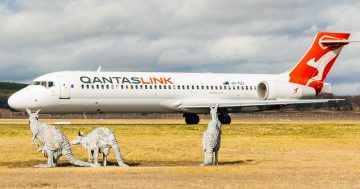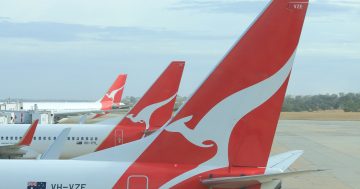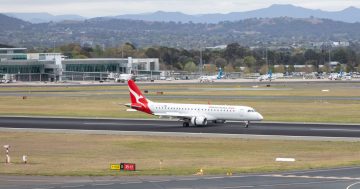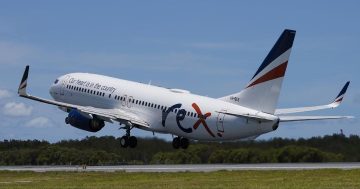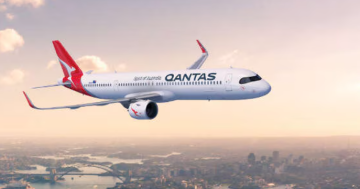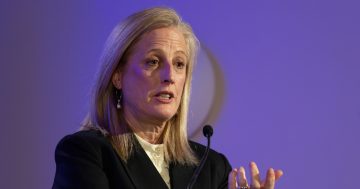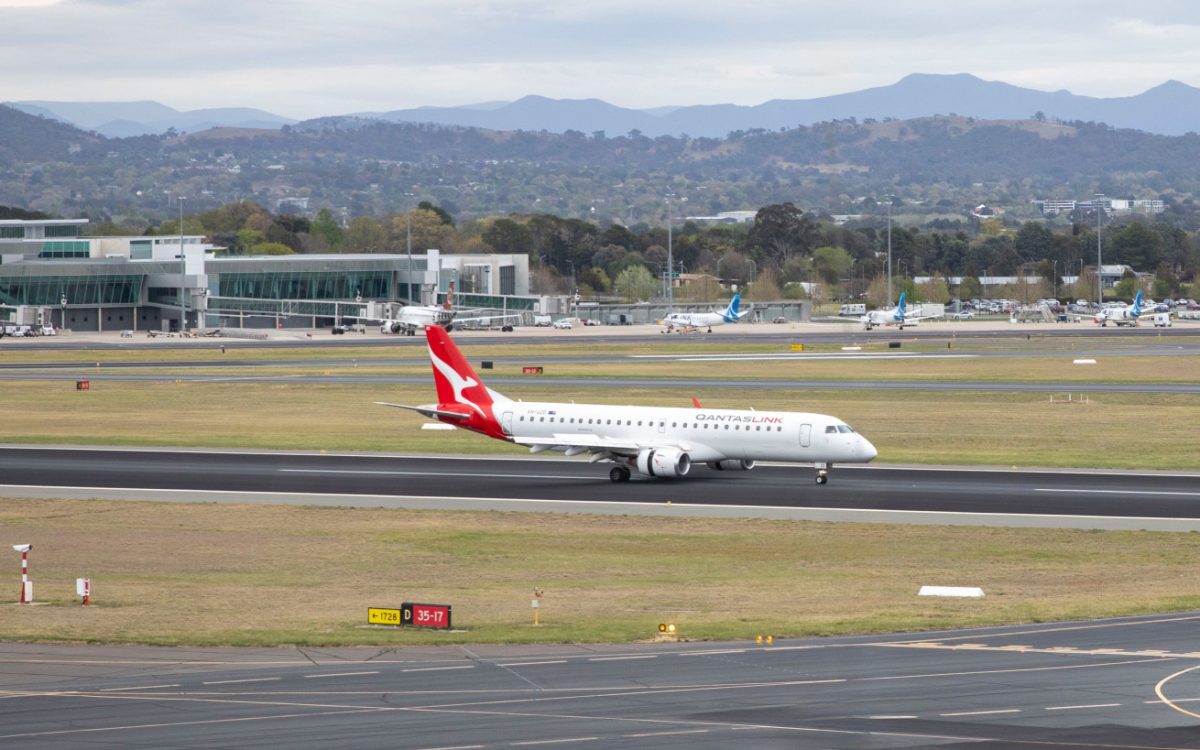
Qantas is still the worst offender for flight cancellations. Photo: Canberra Airport.
High flight cancellation rates continue to dog the Canberra-Sydney route, according to a new report from the competition watchdog.
The ACCC’s June quarter report said the monthly cancellation rate exceeded the industry average in 10 of the 12 months to June 2025.
June was particularly bad, with the route recording the highest cancellation rate in the nation at 11.9 per cent.
Qantas, which has struggled with its reliability, cancelled 14.7 per cent of flights, twice that of Virgin Australia (7.3%), which operates the route through a wet lease arrangement with Link Airways.
The airlines blamed the high number of cancelled flights on the weather, citing fog in Canberra and high winds in Sydney, but the ACCC said mechanical issues with aircraft were also a significant factor.
Changes to the Qantas fleet are expected to improve aircraft performance on the route.
Qantas is replacing its Q300 aircraft with new mid-life Q400 aircraft, which operate on the Canberra-Sydney route.
“Qantas expects that as the new fleet progressively enters service, it will improve resilience and assist the management of engineering impacts,” the report said.
Canberra Airport Head of Aviation Michael Thomson said the airport was disappointed that travellers were being impacted by high rates of cancellation on this route.
“While weather in July did have an impact on services we are continuing to work with all airlines, and in particular Qantas, to ensure that other factors resulting in cancellations are addressed for the benefit of the travelling public,” he said.
But overall, more flights are arriving on time, with the ACCC reporting noticeable improvements.
The average industry on-time arrival rate reached a three-year high of 82.4 per cent in April, with Qantas, Jetstar and Virgin Australia all beating the long-term industry average of 80.7 per cent.
Despite demand returning to pre-pandemic levels and fuel prices falling, the number of seats has not rebounded and ticket prices have remained high.
“The limited growth in the capacity offered by the domestic airline industry has likely resulted in travellers paying more to fly than they would have otherwise,” the ACCC said.
About the same number of domestic passengers flew in June 2025 as they did in June 2019, a 2.3 per cent increase since June 2024.
But in June 2025, total industry seat capacity was 2.8 per cent below June 2019 levels, with only limited growth (0.4%) over the past 12 months.
The ACCC said the industry had yet to fully compensate for the gap left by the failure of Tigerair in 2020.
It said Qantas and Virgin were expected to receive several new aircraft in the coming months, but these were likely to replace wet-leased and older planes initially rather than boost capacity.
Jet fuel prices fell by 12.3 per cent in the year to June 2025, but the real average revenue per passenger index was slightly higher (0.8%) in June 2025 than it was a year earlier.












